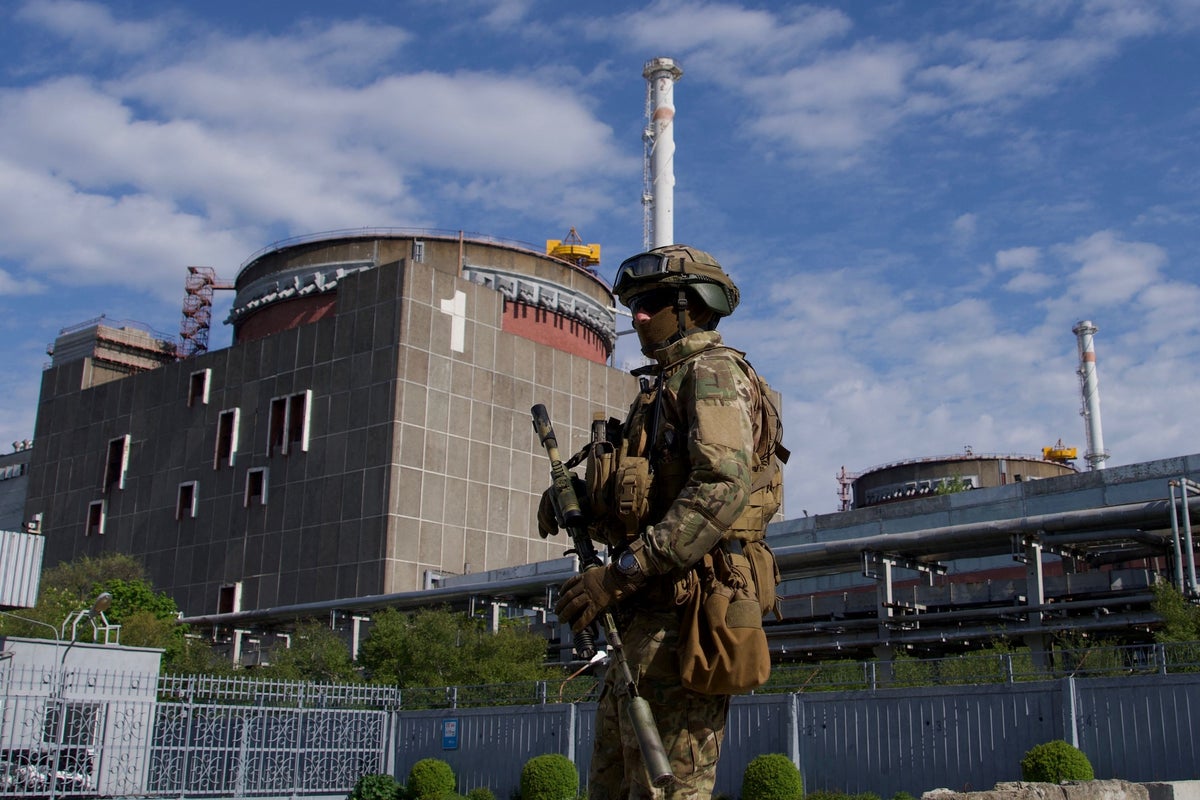
Europe’s biggest nuclear reactor has become a battlefield in Ukraine’s defence against Russian invaders as they risk a catastrophic meltdown in its efforts to connect it to Moscow’s national grid.
The Zaporizhzhia nuclear power plant , which has six reactors, was captured by Russian troops early in the full scale invasion of Ukraine in 2022. It has remained a dangerous potential flashpoint for a nuclear disaster ever since.
Fighting and bombardments by both sides of the complex and the power station itself, which has been entirely occupied by Russian forces who base troops in its buildings, has forced the “cold shut down” of the reactors.
This means that its nuclear material is not used to generate power but needs to be constantly cooled.
Fighting cut electricity from Ukraine which meant that the cooling system had to rely entirely on diesel generators running the power station with a skeleton staff for a month.
Regular power was only restored in the last week after the longest time that the ZNPP had been disconnected from electricity to drive its cooling systems.
Russia needs to cut the Ukrainian power link in order to install its connection into the Russian network – a long-stated ambition.
“The Russian Federation is putting in its power line but elements of it have been successfully damaged by Ukraine,” explained Mykhailo Shuster, nuclear expert and former Director of Procurement at Energoatom – Ukraine’s nuclear power agency.
“Russia is now at a high level of readiness, and to connect it, the power supply from Ukraine must be interrupted.”
It is unclear whether Russia has been able to connect the Ukrainian plant to its own network over the 30-day outage. If it did so it would then have to install converter stations to synchronize the two grids.
But the power cuts to the cooling systems in the ZNPP, combined with the near collapse of the water supplies there after Russia blew up the Kakhova Dam, which provided the main water source for the ZNPP, is causing jitters among local leaders.
The exiled mayor of Enerhodar, the town next to ZNPP which is now also occupied, told The Independent he fears nuclear fallout could melt into the ground water around the plant, contaminate the Dnipro River and eventually the Black Sea.
“Kakhovka dam is destroyed; there is nothing to cool it with,” he said. “Even if they miraculously restore the equipment in the future.
“Worst case scenario – the water will eventually evaporate from the cooling pond, and there will be nothing to cool nuclear fuel.”
“It can melt the concrete and go into the groundwater,” Mayor Dmytro Orlov added from his office in Zaporizhzhia. Mayor Orlov runs humanitarian programmes for the thousands of people, mostly nuclear power workers, who fled the advancing Russians from his town to safety here.
The mayor recalled the disaster of Chernobyl, the 1968 catastrophic failure of a reactor in then Soviet Ukraine which remains the worst nuclear disaster in history.
“The estimated amount of nuclear fuel there is about ten times more than in Chernobyl,” he warned.
A small team of inspectors from the International Atomic Energy Authority regularly inspects the power station and had reported military training and explosions in and around the facility.
Russian artillery and mortars have been seen shelling and bombing Ukrainian towns and villages on the opposite bank of the Dnipro river.
After power was restored IAEA director general Mario Grossi said: “What was once virtually unimaginable – a nuclear power plant regularly losing off-site power – has unfortunately become a common occurrence during this devastating war. However, this was the most challenging loss of power event we have experienced so far.
“There is still much work to do to further reduce the risks of a nuclear accident.”
